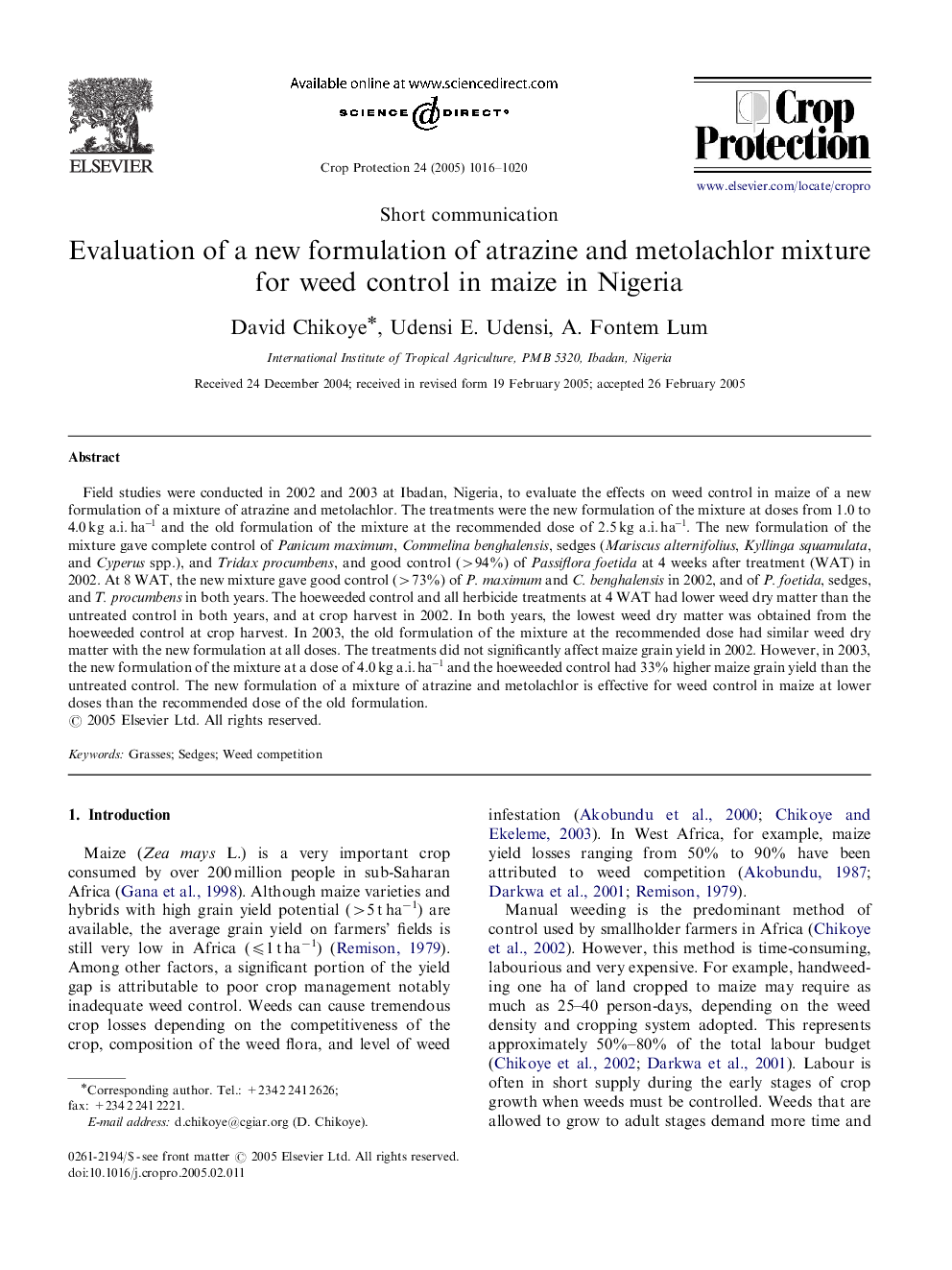| Article ID | Journal | Published Year | Pages | File Type |
|---|---|---|---|---|
| 9473019 | Crop Protection | 2005 | 5 Pages |
Abstract
Field studies were conducted in 2002 and 2003 at Ibadan, Nigeria, to evaluate the effects on weed control in maize of a new formulation of a mixture of atrazine and metolachlor. The treatments were the new formulation of the mixture at doses from 1.0 to 4.0 kg a.i. ha-1 and the old formulation of the mixture at the recommended dose of 2.5 kg a.i. ha-1. The new formulation of the mixture gave complete control of Panicum maximum, Commelina benghalensis, sedges (Mariscus alternifolius, Kyllinga squamulata, and Cyperus spp.), and Tridax procumbens, and good control (>94%) of Passiflora foetida at 4 weeks after treatment (WAT) in 2002. At 8 WAT, the new mixture gave good control (>73%) of P. maximum and C. benghalensis in 2002, and of P. foetida, sedges, and T. procumbens in both years. The hoeweeded control and all herbicide treatments at 4 WAT had lower weed dry matter than the untreated control in both years, and at crop harvest in 2002. In both years, the lowest weed dry matter was obtained from the hoeweeded control at crop harvest. In 2003, the old formulation of the mixture at the recommended dose had similar weed dry matter with the new formulation at all doses. The treatments did not significantly affect maize grain yield in 2002. However, in 2003, the new formulation of the mixture at a dose of 4.0 kg a.i. ha-1 and the hoeweeded control had 33% higher maize grain yield than the untreated control. The new formulation of a mixture of atrazine and metolachlor is effective for weed control in maize at lower doses than the recommended dose of the old formulation.
Keywords
Related Topics
Life Sciences
Agricultural and Biological Sciences
Agronomy and Crop Science
Authors
David Chikoye, Udensi E. Udensi, A. Fontem Lum,
